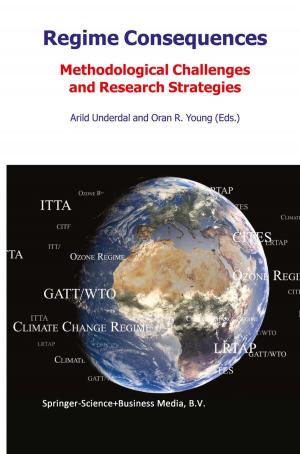| Author: | Theodore G.Th. Pigeaud | ISBN: | 9789401187725 |
| Publisher: | Springer Netherlands | Publication: | March 9, 2013 |
| Imprint: | Springer | Language: | English |
| Author: | Theodore G.Th. Pigeaud |
| ISBN: | 9789401187725 |
| Publisher: | Springer Netherlands |
| Publication: | March 9, 2013 |
| Imprint: | Springer |
| Language: | English |
The Dutch Nagara-Kertagama translation on which Professor Kern worked, at intervals, during eleven years, deserves our utmost admir ation and respect. It is the last important piece of work he finished before his death. It has enriched in an extraordinarily high degree our knowledge of the history and antiquities of the Majapahit period. Moreover, its dignified and courtly style established the reputation of Old Javanese letters as a literature of considerable interest. The con tents of the Nagara-Kertiigama, as interpreted by Professor Kern, gave 14th century Majapahit a nimbus, making it appear to the uncritical public as a most powerful and highly cultured Empire, organized on 18th or 19th century West-European lines. The notes of Krom, Poerbatjaraka and others do not contain com plete translations of the texts. These scholars made valuable contribu tions to a better understanding of several passages. They did not make it easy for the general reader to consult their notes, though. Professor Kern's appreciation of the contents of the Nagara-Kertagama remained fundamentally unshaken. Up to the present time Professor Kern's Nagara-Kertagama trans lation has been generally used and highly appreciated by students of Indonesian cultures and by the public interested in Old Javanese his tory, both in Indonesia and elsewhere. In 1953 a modern Malay trans lation by Slametmuljana was published in Djakarta (Negarakretagama, diperbaharui kedalam bahasa Indonesia). But then, since Professor Kern's days research has made progress. It is clear, nowadays, that his translation has the defects of its good qualities.
The Dutch Nagara-Kertagama translation on which Professor Kern worked, at intervals, during eleven years, deserves our utmost admir ation and respect. It is the last important piece of work he finished before his death. It has enriched in an extraordinarily high degree our knowledge of the history and antiquities of the Majapahit period. Moreover, its dignified and courtly style established the reputation of Old Javanese letters as a literature of considerable interest. The con tents of the Nagara-Kertiigama, as interpreted by Professor Kern, gave 14th century Majapahit a nimbus, making it appear to the uncritical public as a most powerful and highly cultured Empire, organized on 18th or 19th century West-European lines. The notes of Krom, Poerbatjaraka and others do not contain com plete translations of the texts. These scholars made valuable contribu tions to a better understanding of several passages. They did not make it easy for the general reader to consult their notes, though. Professor Kern's appreciation of the contents of the Nagara-Kertagama remained fundamentally unshaken. Up to the present time Professor Kern's Nagara-Kertagama trans lation has been generally used and highly appreciated by students of Indonesian cultures and by the public interested in Old Javanese his tory, both in Indonesia and elsewhere. In 1953 a modern Malay trans lation by Slametmuljana was published in Djakarta (Negarakretagama, diperbaharui kedalam bahasa Indonesia). But then, since Professor Kern's days research has made progress. It is clear, nowadays, that his translation has the defects of its good qualities.















